Access to your meter
In this article
It's important to keep your meter clear and accessible.
Our meter readers visit your property every two months to take a reading from your water meter. We also need access to repair and replace old meters.
If we can’t access your meter due to a physical obstruction or safety hazard, your water use may be estimated. We’ll let you know that we were unable to access the meter and ask that you clear it.
Please be aware that under the Water Services Regulations 2013, it’s your legal responsibility to ensure your water meter is clear and safe to access.
If you don’t clear your meter, we may issue you with a compliance notice. If the obstruction still remains after the compliance notice is issued, we may remove the obstruction or relocate the meter at a cost to you.
Where is my water meter?
If you need help finding your water meter, use our property water rates search tool to check where your meter is located.
How to keep your water meter clear and accessible
The area around your water meter should be 30 centimetres (cm) clear and have at least 120 cm of open air above. This allows us access to the pipework and fixtures on both sides of the meter, so we can conduct any necessary maintenance.

You can help make this easier for us by:
- keeping surrounding plants trimmed
- clearing excess sand and mulch
- ensuring that landscaping such as paving and decking aren’t covering the meter or nearby pipework
- ensuring that any dogs on the property are secured away from the meter area.
Common meter obstructions and access issues
While the meter face may be visible for readings, both the meter and its pipework must be clear and safe to access. This is so our team can conduct repairs or replace your meter, when necessary.
Here are some common obstructions we encounter and how each of them can be addressed.
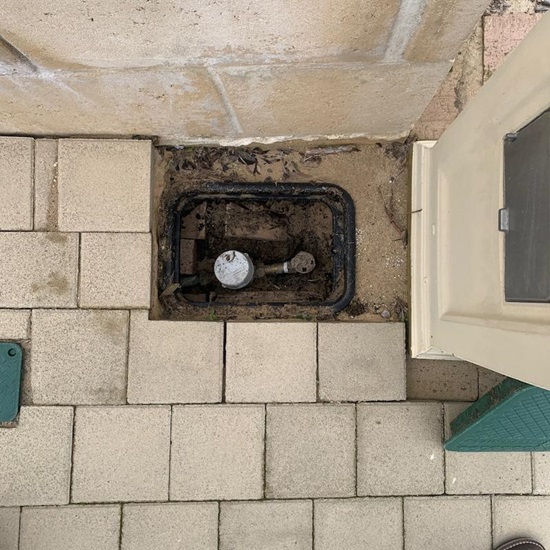
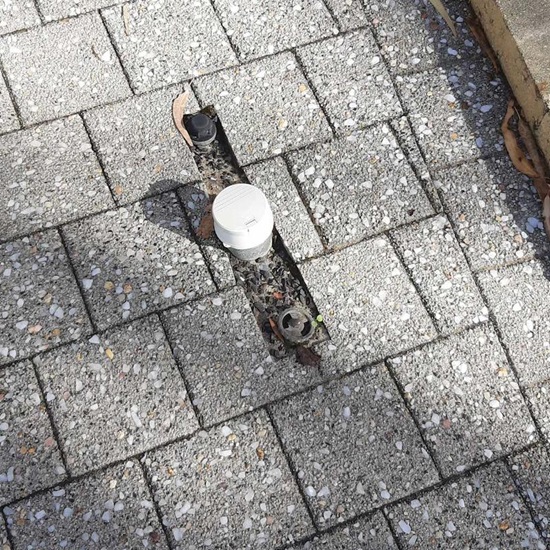

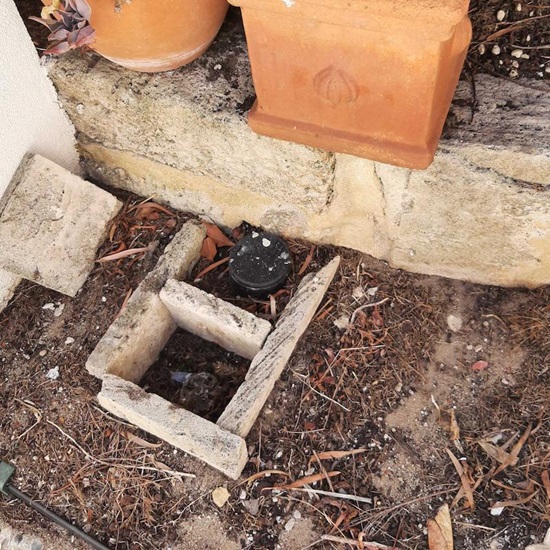
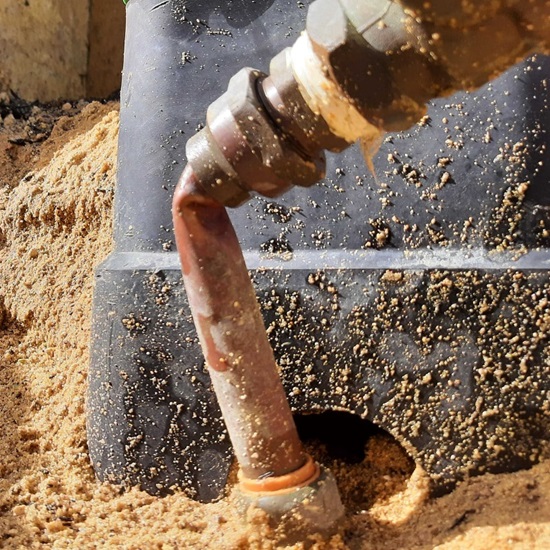
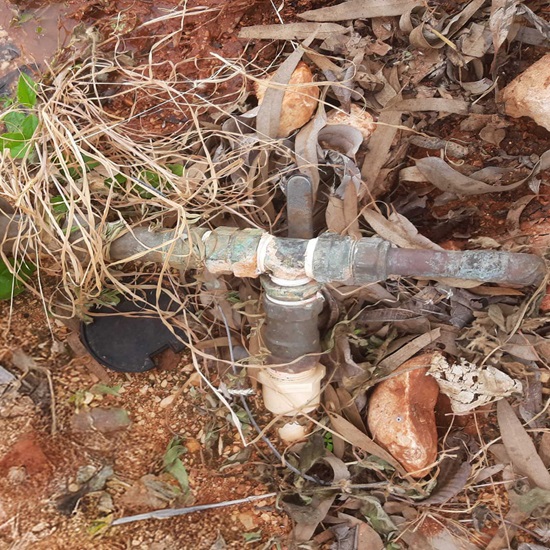
Boxes and pits
The water meter’s outlet pipework is blocked by the side of the black box and brick pavers, preventing access for tools to be used.
How can this be addressed?
The property owner will need to remove the surrounding black box, the bricks and pavers to provide clear access to the outlet pipework.
Buried, covered pipework
How is this an obstruction?
The meter’s pipework is covered, which prevents us from repairing or replacing the meter.
How can this be addressed?
The property owner will need to clear the pavers and gravel to expose the meter’s pipework so that there’s enough clearance on all sides.
Plants, tree roots and stumps
How is this an obstruction?
The water meter and pipework are covered by overgrown plants, preventing access for repairs or meter replacements.
How can this be addressed?
The property owner would be required to remove the plants from around the meter and pipework, including roots or stumps that are growing close to or are resting against the pipework under the soil.
Fences and walls
How is this an obstruction?
The meter’s pipework is covered by a wall, which prevents us from repairing or replacing the meter.
How can this be addressed?
The property owner will need to remove the portion of wall that covers the pipework, with enough clearance to allow tools to be used on the meter pipework.
They would also need to remove the surrounding brick ‘pit’ and excavate to expose the pipework fully.
Damaged meter outlet
How is this an obstruction?
The property side of the meter outlet pipework is damaged or shows signs of wear, such as rust or calcium buildup.
How can this be addressed?
The property owner will need to get a licensed plumber to repair and/or replace the pipework.
Non-standard pipework
How is this an obstruction?
The meter outlet or branch/connection on the property side of the meter assembly is non-standard (i.e. welded, PVC, or the branch is within 1 metre of meter assembly).
How can this be addressed?
The property owner will need to get a licensed plumber to rectify the pipework.
Your meter and your dog
The safety of our work crews is important to us. We kindly ask that if you have a dog, please ensure they are secured away from the meter area so that your meter can be accessed safely.
If there's an unrestrained dog within reach of the meter area, our meter reader and repair crews won’t enter your property.
What to do if your meter is obstructed by a gate or dog
Install a WAS lock
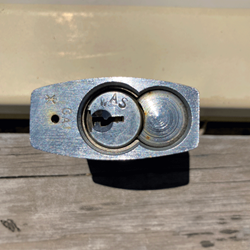
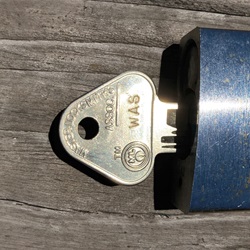
WAS locks are a special type of lock that can be operated using a master key held by all WA utilities.
We might not be able to access your meter if it’s located behind a locked gate. If you’d like to keep your property secure while still allowing us access to your meter, you can install a Western Australian Services (WAS) lock.
A WAS lock is a special type of lock that can be operated using its own original key, as well as a master key which only ourselves and other WA utilities have access to.
To get a WAS lock and key made for your property, you will need to visit a licensed locksmith.
If you install a WAS lock, please contact us on 13 13 85 so we can let our meter readers know.
Request a remote access device
A remote access device is an electronic device that is fitted to the meter. It allows us to get your water use reading remotely, using a handheld Bluetooth device from outside the property boundary.
It’s a good option if your water meter is in a courtyard or enclosed area, if you have a dog or if you are providing self-reads regularly.
Remote access devices are only available for the metro, and not in country regions.
Please note: This is not a smart meter. With a remote access device, you won’t have access to the same water use data available with a smart meter in your online account.
To request a remote access device, please call us on 13 13 85 and we can make arrangements. The cost to install a device is $210.47.
Submit your own meter reading
You can read your own meter and submit a reading using our online form.
To do this, you’ll need to include a photo of your meter that shows the reading and meter number. Learn more about how to read your water meter.
Apply for a meter relocation
If you’re still unable to provide us with access to your meter, you can apply to have your meter relocated to the front of your property.
Please note that this will require a licensed plumber to relocate your internal pipework. Learn more about the application process to relocate your meter.